Our Verdict
The Shure MV7 is a great sounding XLR/USB hybrid microphone that'll give veteran podcasters and streamers a serious upgrade.
For
- Excellent Vocals
- USB/XLR combo
- Versatile
- Easy Use software
Against
- Expensive
- Mic stand sold separately
PC Gamer's got your back
You don't really need to be much of a sound person to know Shure makes killer audio gear. Chances are, you've seen some of your favorite musicians rock a Shure microphone on stage or in the studio. Shure has been providing pro-grade microphones for an age, and the MV 7 Podcast microphone is its attempt to bring its high-end sound to content creators.
The USB Type-B Micro/XLR connection will be the big draw for a lot of folks. It gives you the best of both worlds by providing the adaptability of XLR (especially if you use professional audio interfaces) and the versatility of Type-B Micro inputs for recording on the go with laptops and mobile devices.
The MV7 microphone is for content creators who want to bring up their production values to pro-grade levels but don't want to or can't spend that pro-grade money. This is the reason why XLR microphones are hard to recommend for streaming, podcasting, and gaming.
They become pretty expensive endeavors, especially when they require a USB audio interface (some XLR mics require phantom power), which can easily cost over $500. So at $250, having a hybrid USB/XLR microphone isn't that big of an ask when you consider the flexibility of the Shure MV7, which lets you use both.
Price: $250 BH Photo
Condensers: 1
Directional Patterns: Unidirectional Cardioid Polar Pattern
Controls: Integrated Touch Panel for Mic Controls
Recording Sample Rate: 48kHz
Bit Depth: 24-bit
Weight: 1.21 lbs
In the box, you'll get a Micro Type-B to USB Type-C and Micro Type-B to USB Type-A cable. Useful if you're recording on the go on your phone and don't want to pick up the background noise. If you've ever conducted an interview at a convention, or trade show, or tried to record audio in a packed location, you know how easy it is to have your subject drowned out by crowd noise when you whip out your phone to record.
Much like the time I interviewed a Halo 5 dev in 2015 at an event and had my recording rendered useless because the press of humanity was loudly singing along to The Weeknd's "Can't Feel My Face" through most of the interview. Sigh.
Available in black and silver, the MV7 keeps with Shure's studio microphone look, forgoing any RGB LEDs or any particularly 'gamer' design choices, and keeps things simple and elegant. It looks like a squished version of the SM7B, Shure's very popular broadcast microphone that retails around $400.
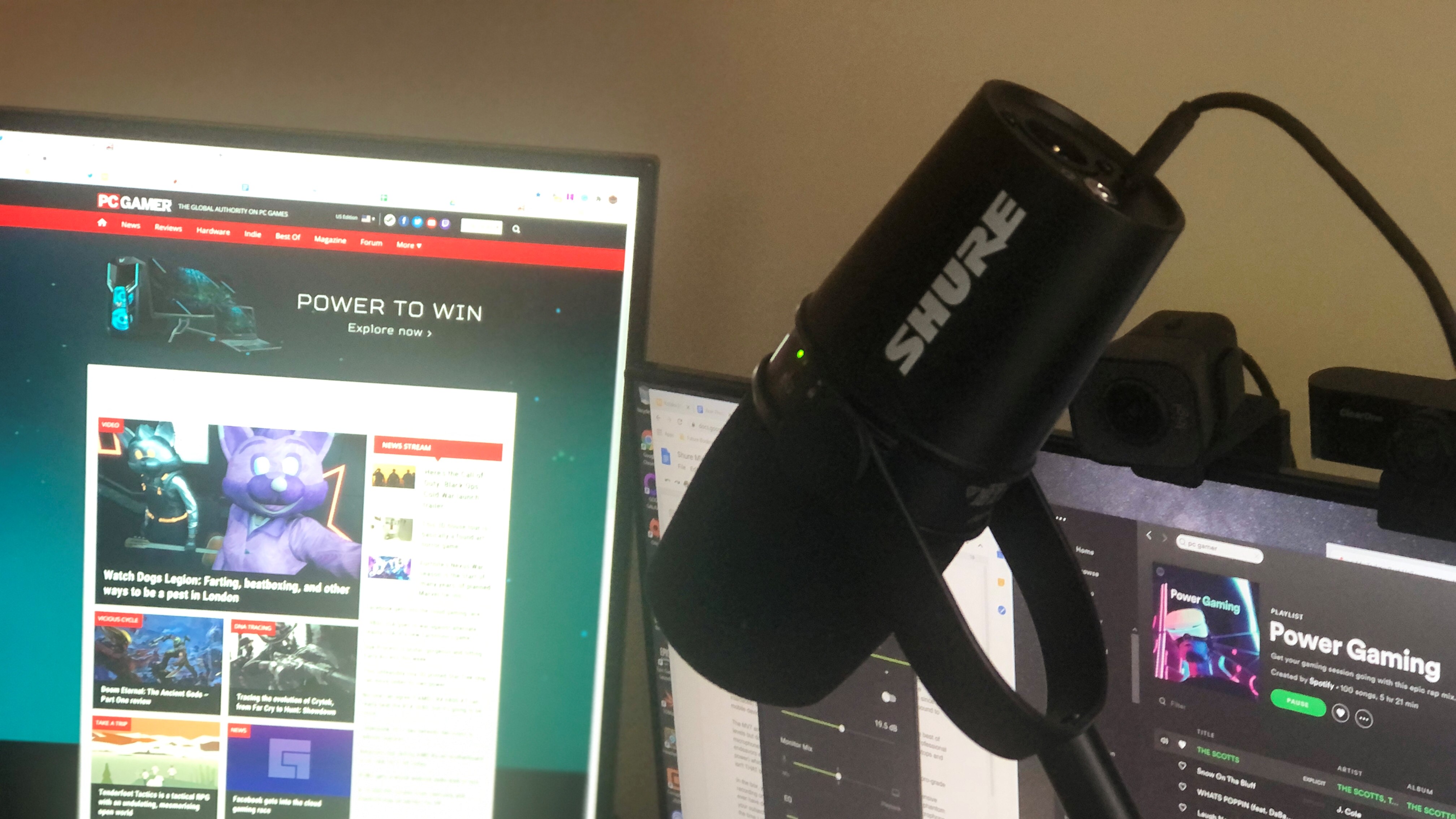
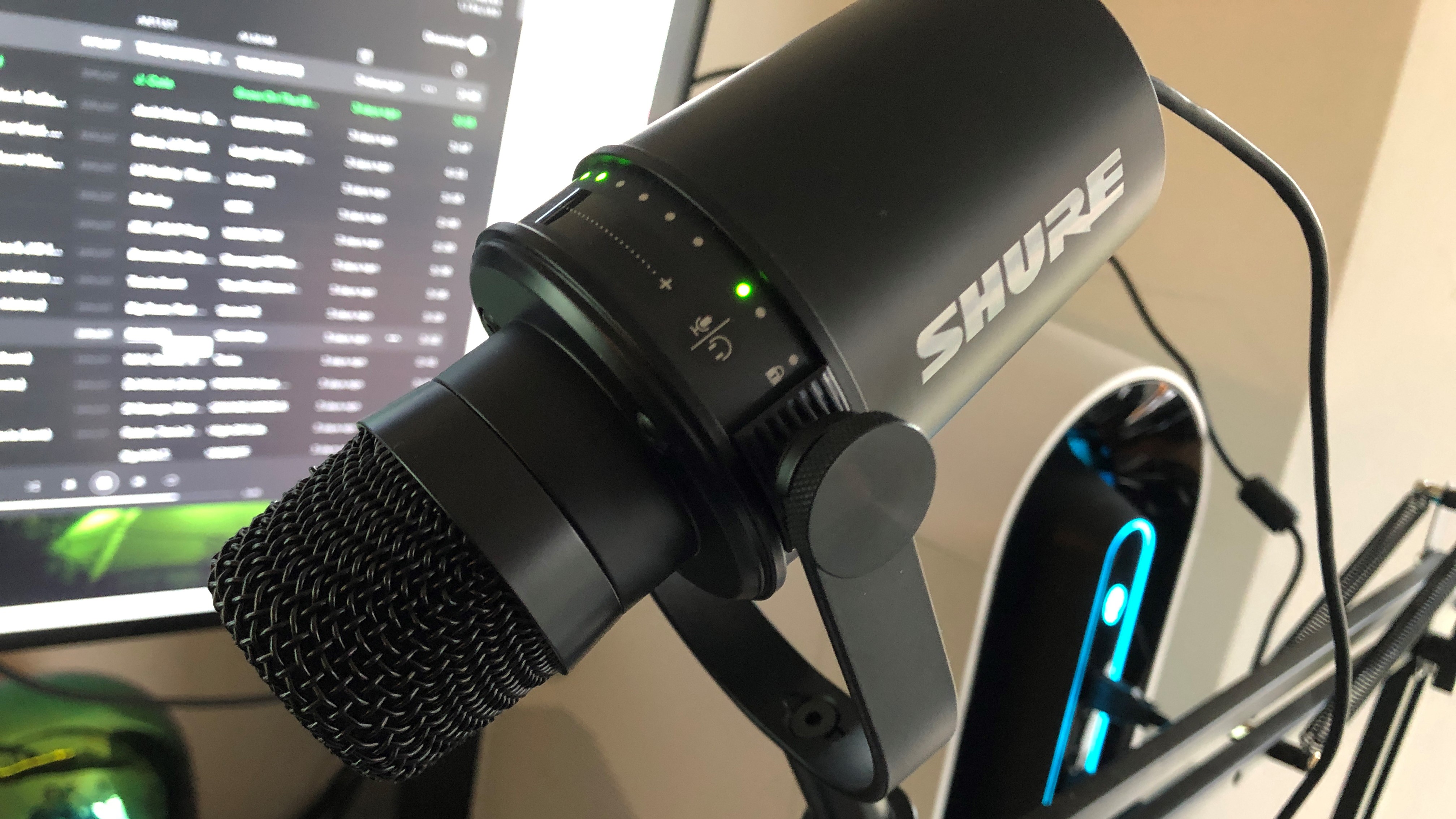
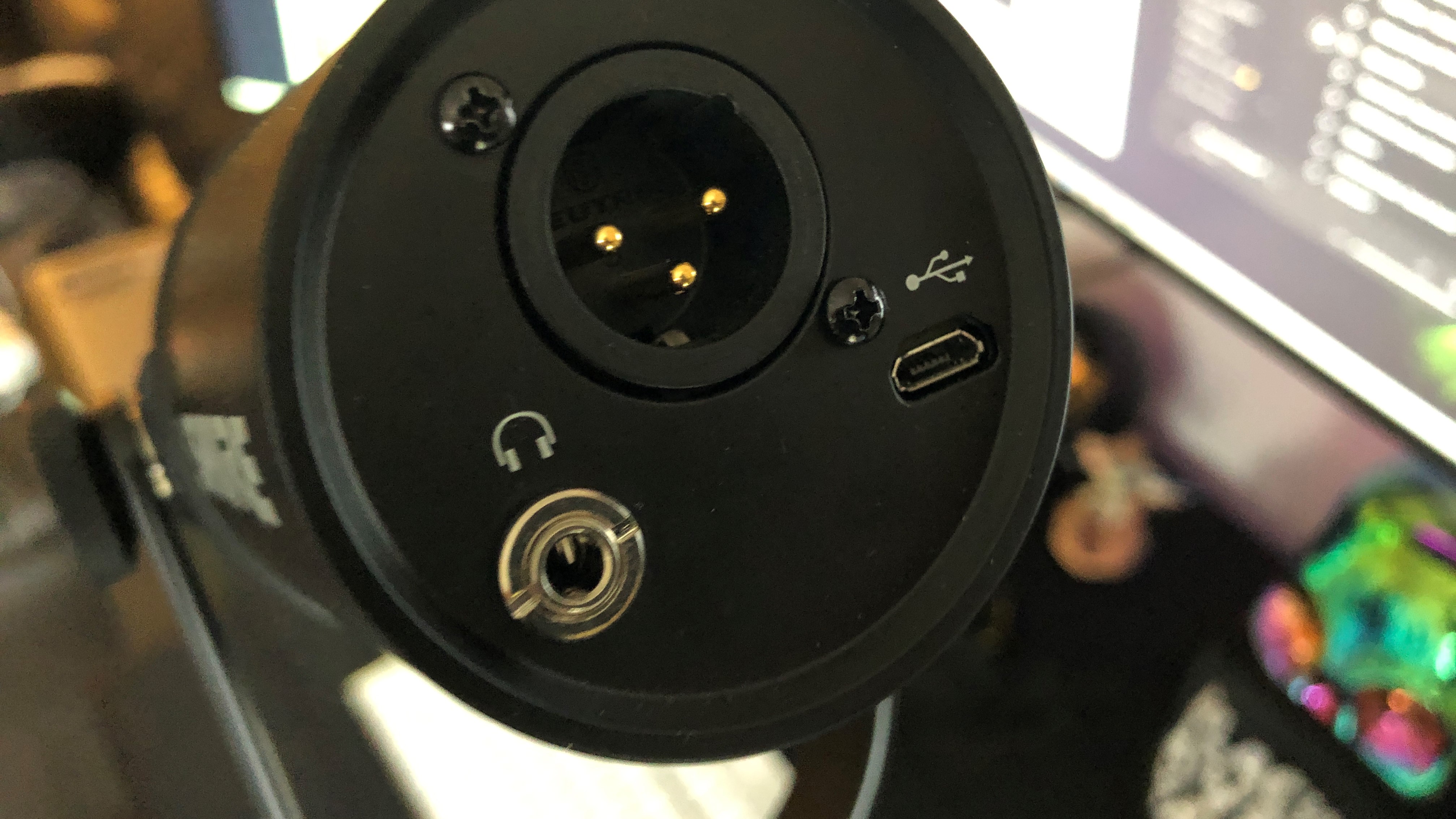
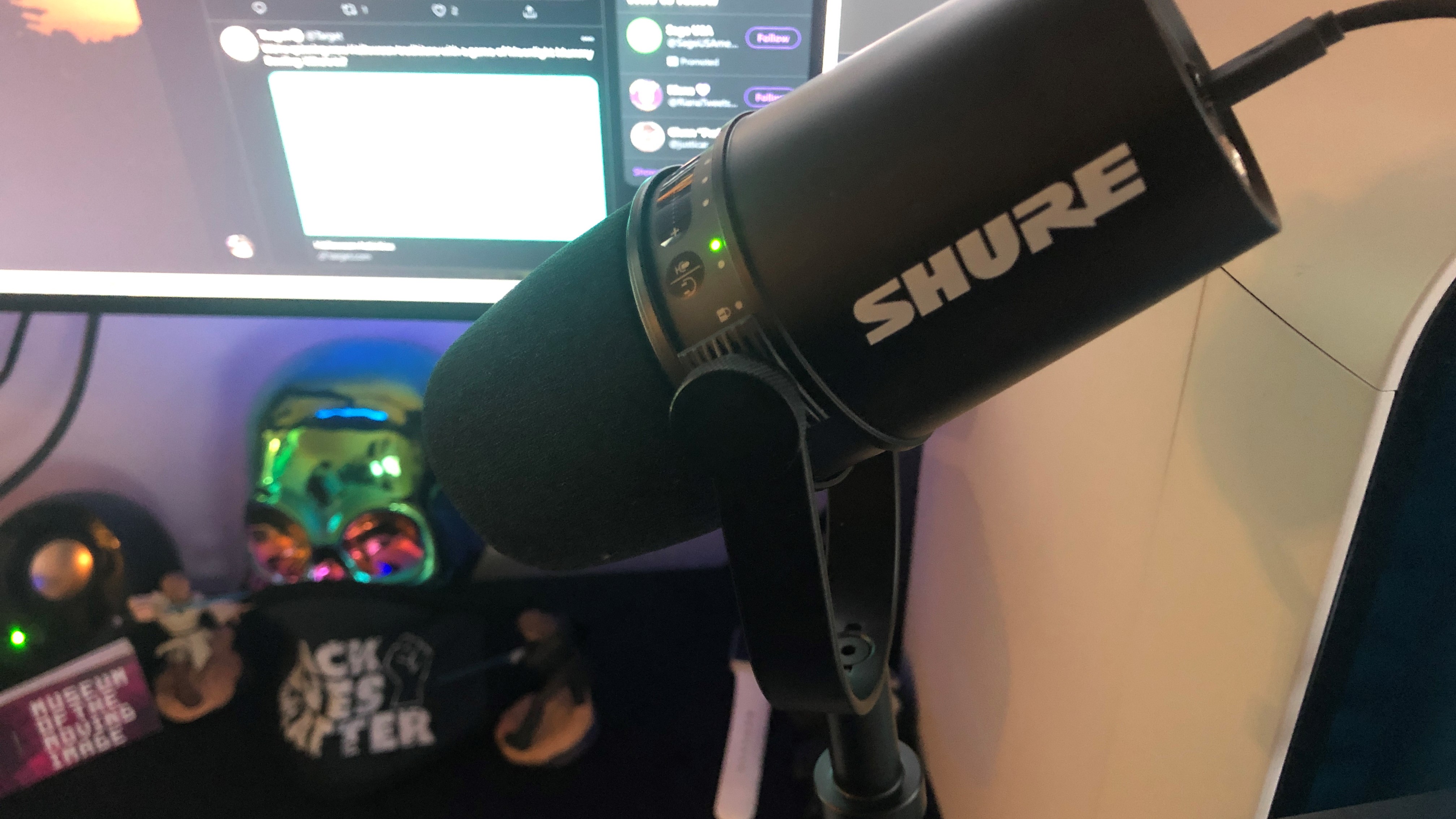
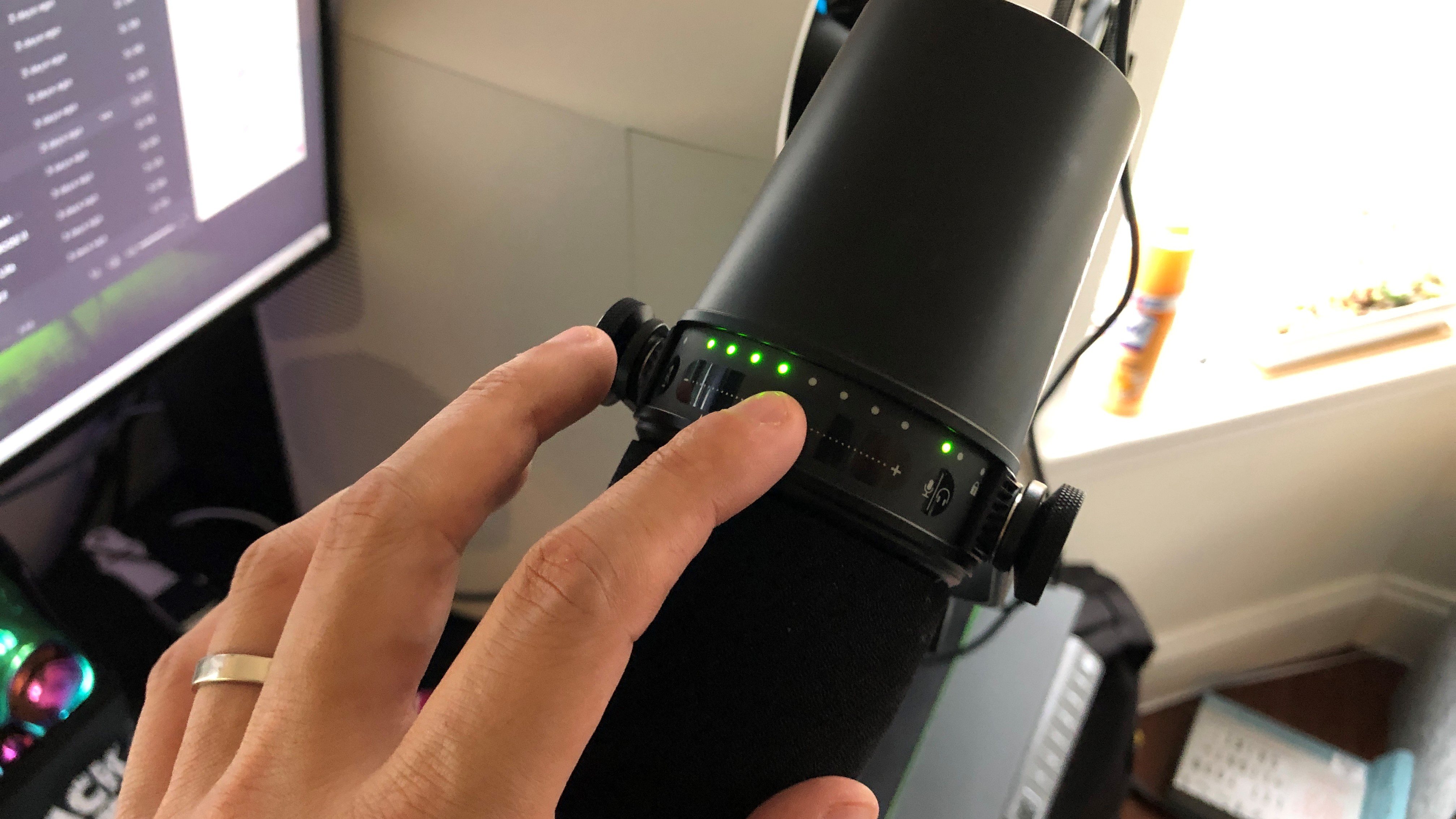
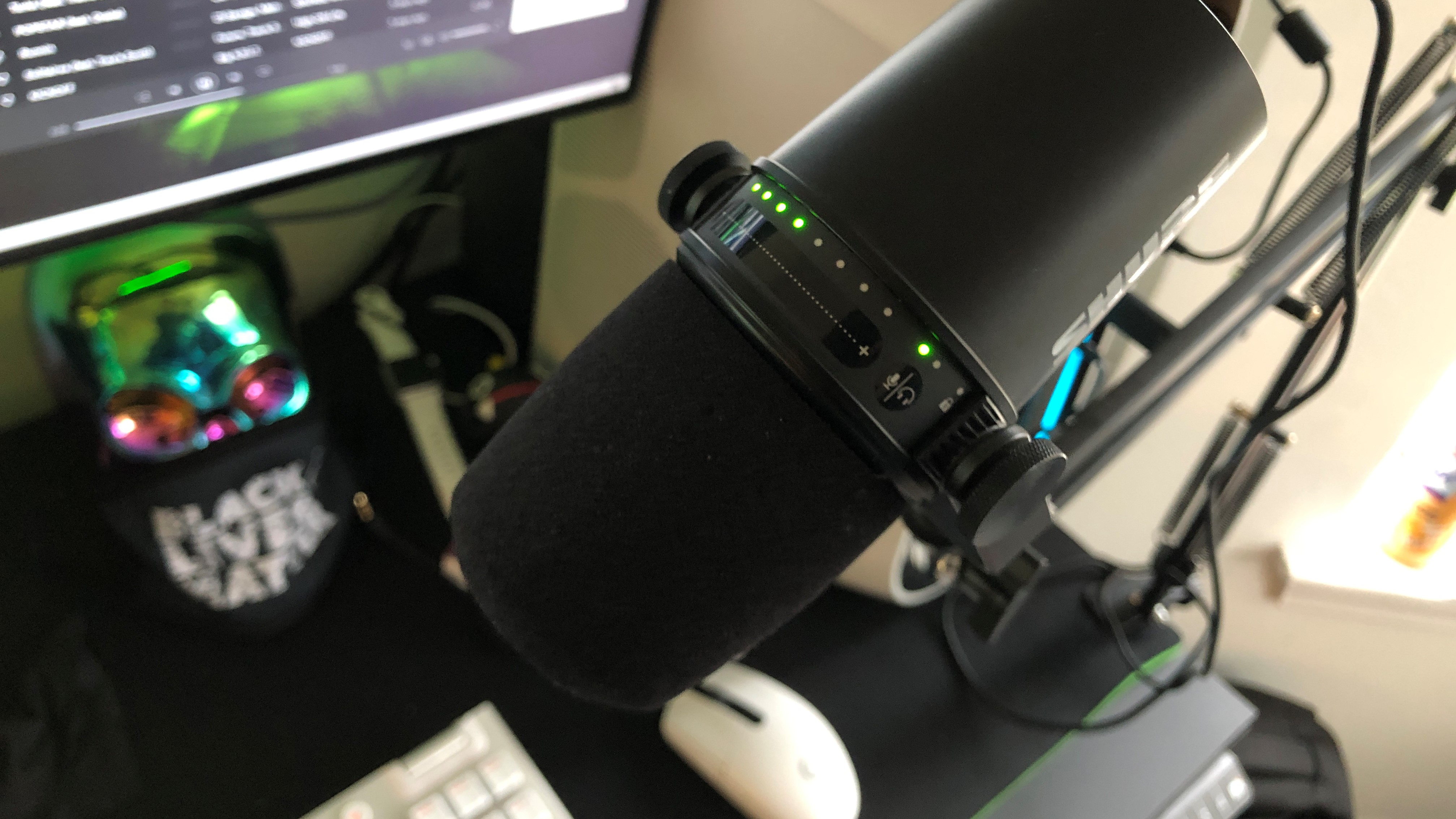
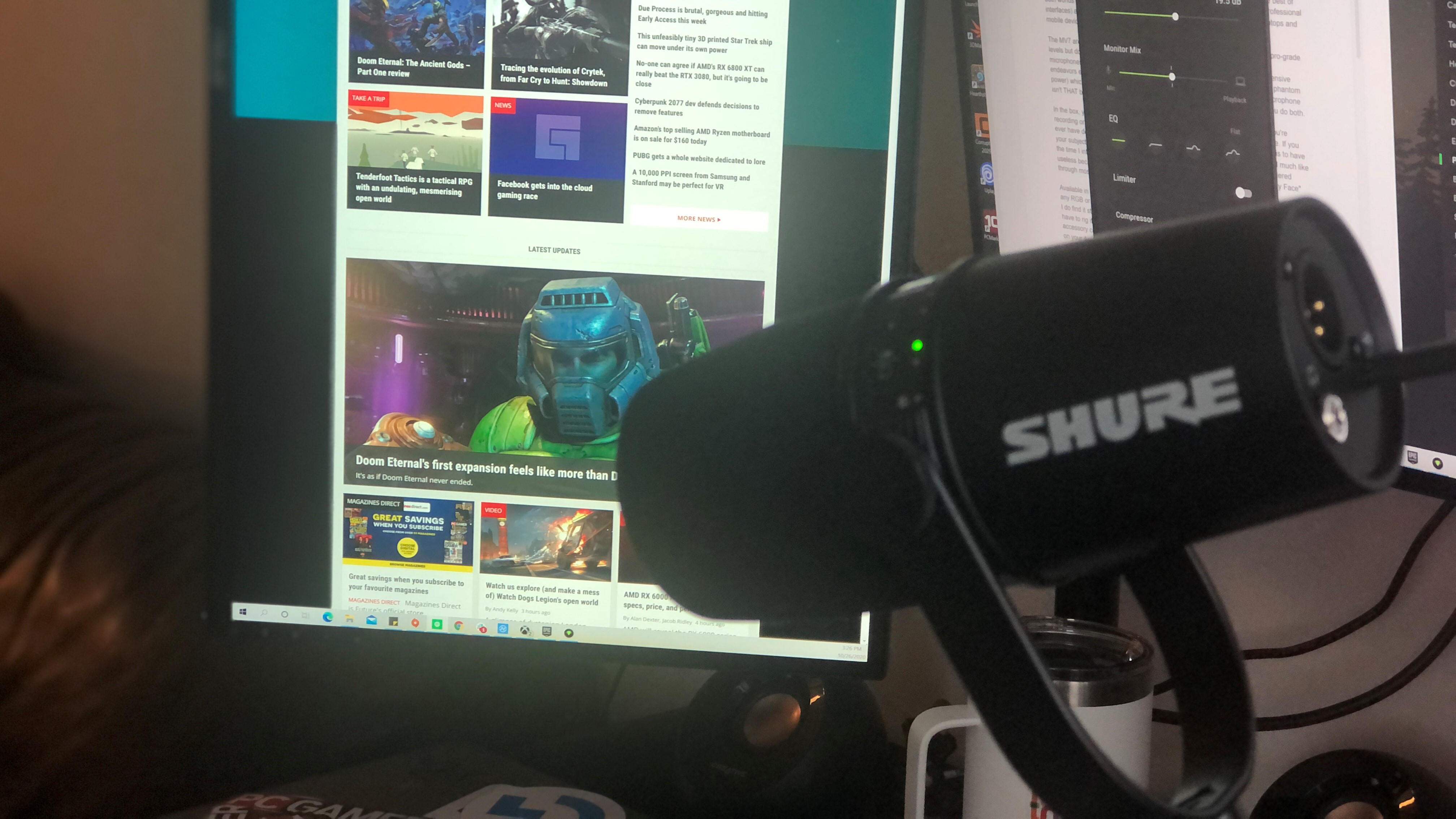
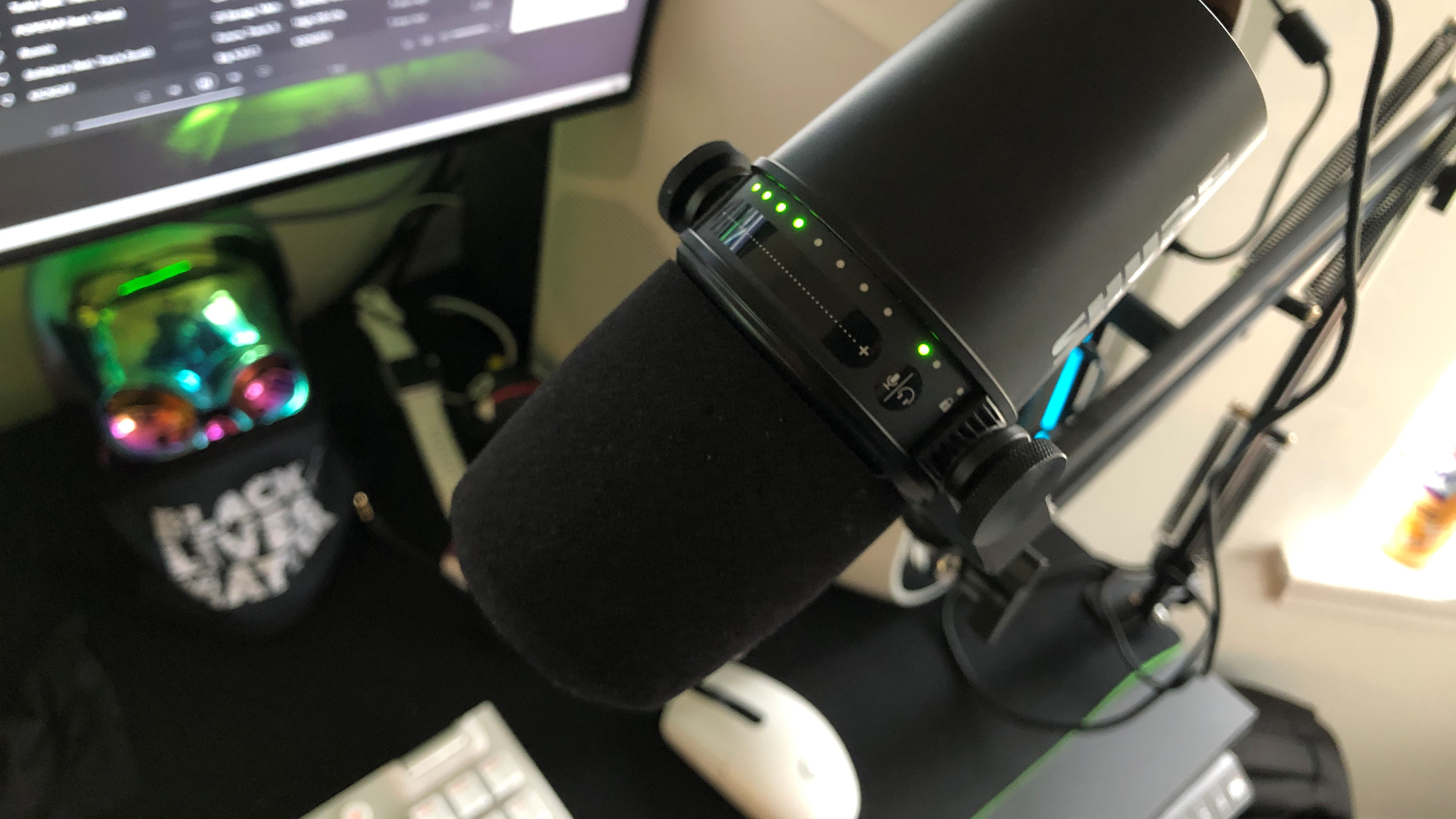
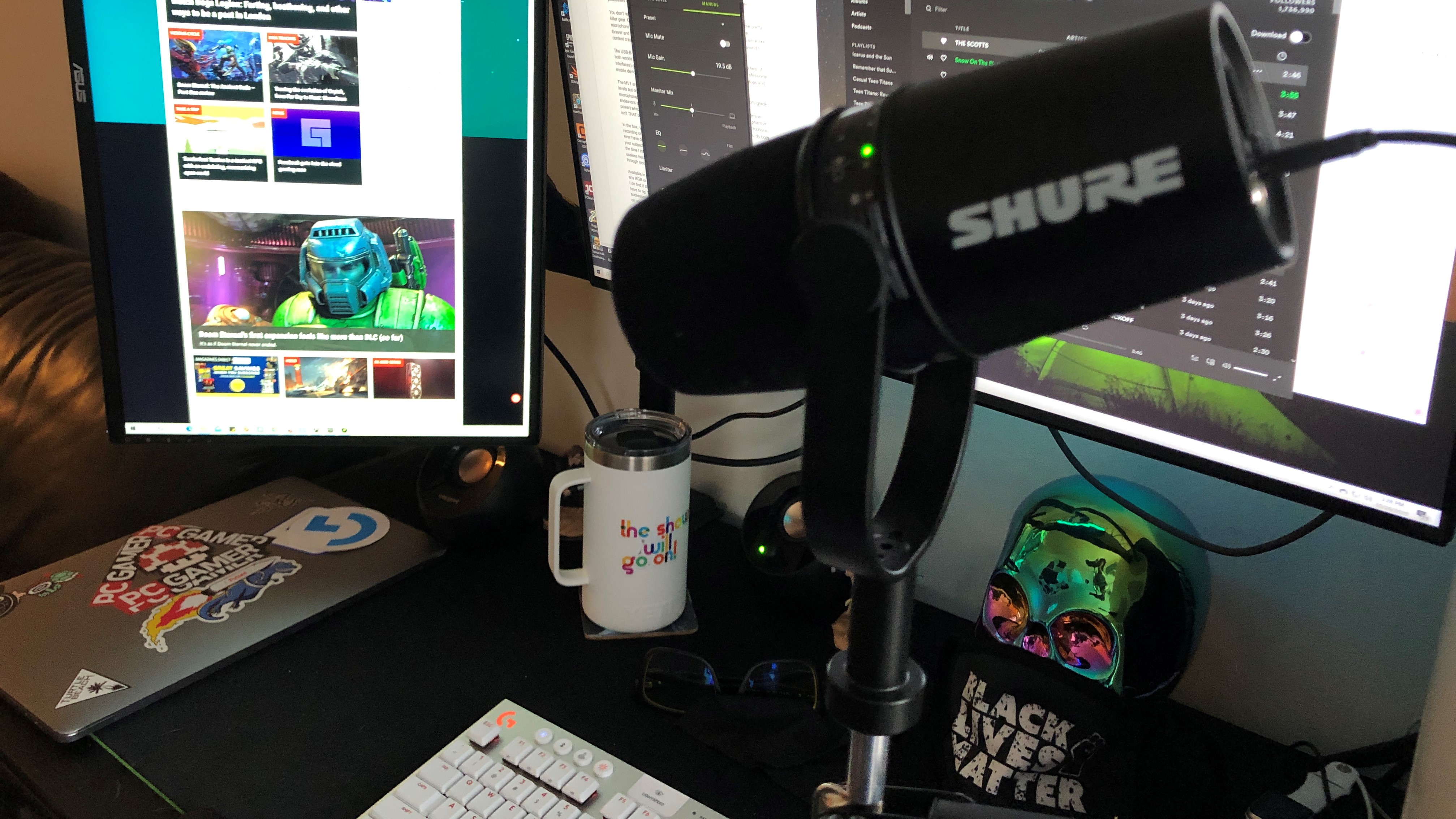
I do find it strange that there's no included mic stand (that version will cost ya $10 extra), so you'll have to rig it to a boom arm. The Shure website does a decent job of offering different accessory combinations if you needed a pair of headphones, lightning cable (to record on your Apple device), or something like a boom arm. However, the costs do quickly start to add up.
Compared to other premium microphones like the Blue Yeti X, Hyper X Quadcast, or Elgato Wave 3, you'll hear the Shure sounds more in line with the Elgato and does a good job of not picking up background noise right out of the box. In fact, I'd say the Wave 3 is the closest competitor to the MV7, more so than the Yeti X or Quadcast. The mic itself does an excellent job of isolating my voice while ignoring the loud hums of my desktop PC, air conditioner, and any other ambient nonsense I have going on in the background. You will notice some pretty loud plosives, so it might be best to invest in a windshield or not having the mic directly in front of you when recording.
The MV7 takes advantage of the ShurePlus Motiv software, which lets you tweak and fine-tune your sound with relative ease. From here, you can mess with things like adding compression to your voice, adjust your EQ, and add a limiter. One of the more understated features is the Auto Level Mode. We've seen similar features in other mics, such as the Elgato Wave 3, which basically keeps you from hitting the red. That's especially useful if your content involves lots of shouting or singing or both. So now you don't have to worry about bursting your viewers' eardrums when a jump scare gets the better of you in Phasmophobia. Also, nice if you're a bit of an audio novice, and your recording area isn't acoustic-friendly.
The Shure MV7 Podcast microphone is the perfect microphone for anyone looking for a serious upgrade. If you're a musician or just want your voice to sound the way it should be heard, the MV7 is an easy recommendation if you don't mind reaching deep into your pocketbook.
Shure's first hybrid XLR/USB microphone manages to provide pro-grade sound with minimal set-up and expertise. While it is more expensive than your average premium mic, its versatility completely justifies the cost.
The Shure MV7 is a great sounding XLR/USB hybrid microphone that'll give veteran podcasters and streamers a serious upgrade.

Jorge is a hardware writer from the enchanted lands of New Jersey. When he's not filling the office with the smell of Pop-Tarts, he's reviewing all sorts of gaming hardware, from laptops with the latest mobile GPUs to gaming chairs with built-in back massagers. He's been covering games and tech for over ten years and has written for Dualshockers, WCCFtech, Tom's Guide, and a bunch of other places on the world wide web.

